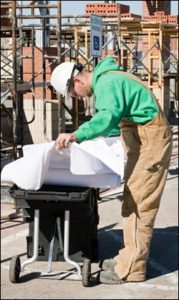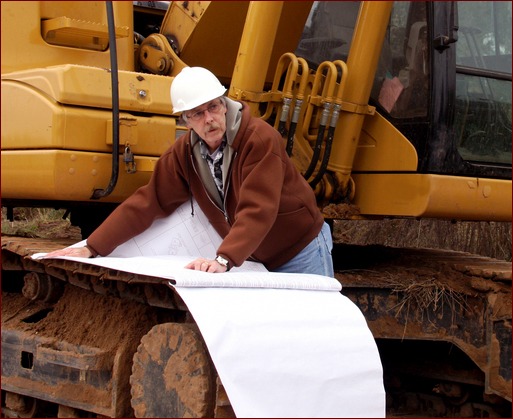Keeping our Trade Strong
Words: Moroni MejiaWords: Moroni Mejia
A quick search of "workforce development" on Google will yield more than 62 million results in less than a quarter of a second. Pretty much everything has been said, written and done before. You've heard all the clichés about the "lifeblood" and "backbone" of our industry. Many of you understand the importance of a skilled workforce, and some of you already are heavily involved in training efforts locally and nationally.
As I racked my brain for a new idea or some original thought regarding this subject that is so important to us as an industry, I had a bit of a personal revelation. Workforce development isn't an initiative, a training center, a national contest, a curriculum, or a marketing effort. In its purest, most personal sense, it is a collection of individuals who have given of their time, shared their skills, imparted knowledge, and provided each of us the opportunities that have allowed us to become contributing members of the masonry industry. Their faces and the experiences we share with them are what we remember, not the words or numbers that fill the articles, textbooks, worksheets, score sheets, and exams along the way.
It is somewhat fitting that the gallery of faces that define my own development begins with my father's. Moroni M. Mejia is a proud Mexican immigrant who once provided for his family by taking on as many jobs as necessary. He was a journeyman pressman by trade, but filled his nights and supplemented his income by doing anything from cleaning offices to assembling electronic motherboards. At his side, I learned the value of working hard – that any job worth doing was worth doing impeccably, and that if you weren't trying to be the best, you were wasting your time.

Time was on my side the day I first laced up my work boots and stepped onto a jobsite; at 18 years old, I was eager to work and ready to prove myself. Rudy Martinez was the first bricklayer I met that day. With a somber look on his face he asked, "Are you here to replace that poor young hoddie that fell from the scaffold yesterday?"
I was new to the trade and bricklayer humor, so I had no idea what a "hoddie" was, but it took everything I had to focus on my work instead of falling as I scampered along the scaffold plank. Rudy taught me to enjoy the work, give the new guys a little hell, and then treat them like family if they stuck it out. I visited that site recently, and I laughed when I looked up at the 40-foot-high wall we were building that day. At the time, I could have sworn we were building a high-rise.
Dave Gonzales was the foreman on that first project, and I can guarantee he knew exactly what we were building. He understood every aspect of the project and kept complete control in the midst of the apparent chaos that surrounded him. Dave took me under his wing and patiently passed on his methods for layout, material calculations and crew management.
The late Harvey Robinson was the one bricklayer I worked alongside the most. He helped me understand the nuances of the level, trowel and striking iron; and showed me that in the hands of a well-trained bricklayer, they were the tools of an artisan. It was with him that I learned how beautiful a finished section of masonry could be. I still keep my first Smith level in the case he gave me, and store many memories alongside that 4-foot section of cherry wood.
It was the lead instructor at the Arizona Masonry Contractors Association's apprenticeship program, Casey Schreur, who first explained to me that bricklayers carried wooden levels – "that metal junk is for framers and ironworkers" – and showed me how to care for mine. A Vietnam War vet, Casey was as good a storyteller as he was a teacher. My classmates and I regularly enjoyed distracting him from the day's coursework by getting him going on a tangent about the good old days.
On Saturday mornings, we would hit the old tennis courts of the local vo-tech school to practice our projects with lime mortar. Ed Shea, an old Irish bricklayer who joined us on those Saturdays, often amazed us with the way the trowel appeared to be an extension of his hand as he demonstrated the skills we were learning. I'll never forget one frosty morning as we crowded around the fire in one of our water barrels trying to squeeze on another set of gloves to keep our hands warm. Ed walked by, carrying a trowel in his ungloved hand, chuckled and muttered through his cigarette, "Welcome to the trade boys."
Another one of our companions on those Saturdays, Mike Canez III, definitely was one of the boys. A third-generation mason, the trade was in his blood, and he was always eager to coach us along and push us to pick up the pace when he saw us lagging. It was Mike who I chased around brick columns back then, as I prepared to travel to Las Vegas to compete in my first international masonry skills competition. And it was during those chases that he taught me to trust my hands and my eyes – to use my level to check my work, not build it.
My sponsor throughout all those apprenticeship years and competitions, Bob Ahlers, is a mason contractor who cut his teeth on stone fireplaces in Ohio but had become one of the more influential men in the industry in Arizona. Bob and his wife, Judy, gave me my first job at Rhino Masonry, and quietly supported me in the background as my career path unfolded. They taught me to be a businessman of principle and integrity, to be generous with my time, and that the men we worked with were our family and much more than our most important business asset.
The gallery of faces goes on as does the list of lessons I've learned at the side of those willing to teach me. Truth is, I've tried to learn something from every interaction I've had within this industry. These interactions have taken place with everyone from mason tenders and students to the executive board of the MCAA and our current congressmen. While these interactions may have gone unnoticed or seem insignificant to them, they have each contributed in some way to the skills, knowledge and love for this trade that I've developed over the years.

So how can you contribute to workforce development? You don't need to fly to the capital to meet with legislators, rewrite training textbooks, open and operate training centers, organize international competitions, develop alliances with other national trade associations, or initiate an effort to change the image of the construction worker. The MCAA and our partners are actively doing all these things. While you are welcome and encouraged to join those efforts, the single, most significant contribution you can make to workforce development is found in the daily interactions you have with those around you: the mason tenders, apprentices, bricklayers, and especially high school students as they seek out careers.
The task of recruiting, developing and retaining these individuals is equally critical and daunting. So, I challenge each of you to find a way to share the skills, knowledge and love that you have acquired. The future of our industry is out there, eager to soak it up. If you're not sure where to begin, drop us a line. One of your fellow members will point you in the right direction and, together, we can continue to Keep the Trade Strong.